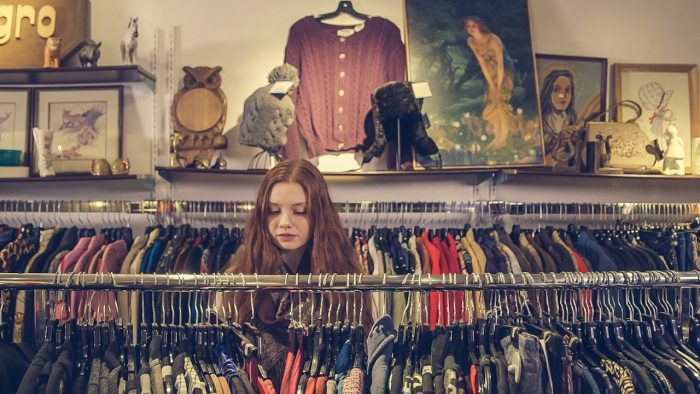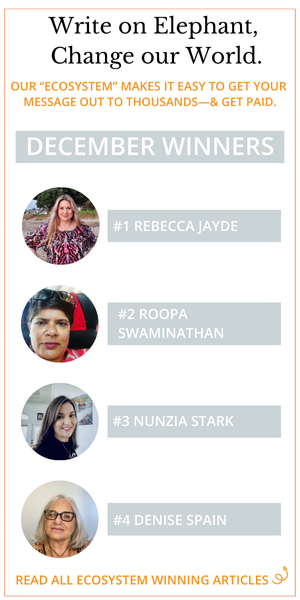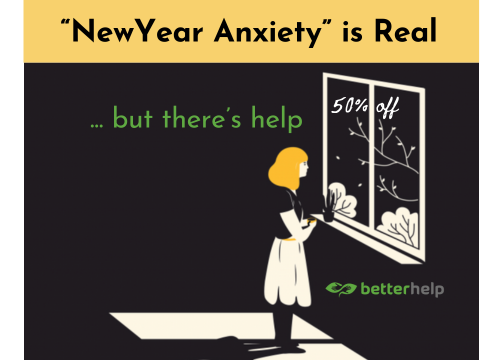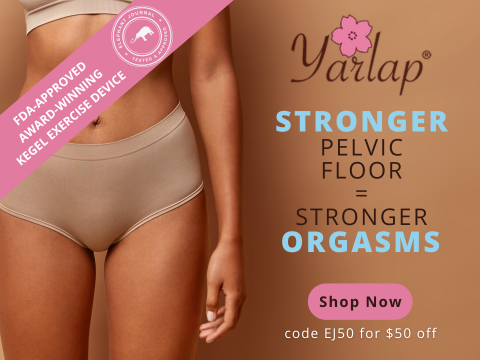{*Did you know you can write on Elephant? Here’s how—big changes: How to Write & Make Money or at least Be of Benefit on Elephant. ~ Waylon}
~
I get it, guys—life is expensive.
Some of us are in debt, living paycheck to paycheck, struggling to make ends meet.
If you’re shopping on a budget, it can be extremely hard to avoid fast fashion brands such as Zara, Shein, Forever 21, H&M, Urban Outfitters, ASOS, Hollister, Aeropostale, and so many others.
When looking for a new outfit, I find myself shopping at these brands too; they’re easily accessible and much more affordable than high-end clothing brands. However, the cheaper option comes at a high cost to our environment.
I’ve loved fashion and shopping ever since I was a young girl, but as I got older, my perspective on shopping changed forever when I read an article about the clothing industry and its detriment to the environment. I found myself developing a disdain for it all; I wanted to be as minimal as possible.
A few years ago, I discovered the world of thrifting and fell back in love with fashion more than ever. Now, I love shopping secondhand and finding unique articles of clothing while still trying to maintain a minimalist wardrobe.
Unfortunately, with the overflux of fast fashion, the world of thrifting is beginning to change. The popularity of these fast fashion brands, coupled with the quick turnover of trends fueled by social media, means many lower-quality clothing items are donated and sold in thrift stores, making durable vintage items harder to find.
Most of us know that brands like Shein, Forever 21, and Zara are designed to fall apart. They’ve taken the approach of quantity over quality—how can we make the most with the least amount of overhead cost? Our planet and its people, especially those in third-world and impoverished countries, are the collateral damage. The main focus of marketing is to create mass consumerism by making us feel like “this is a must-have and it’s so affordable.” We want the next trendy thing that hits the market, but we can’t always afford it, right? Fast fashion brands know that; so what do they do? They recreate a version of it—faster, cheaper, and with poor quality—so you’ll have to buy a new one. So yes, you’re saving money now, but in the long run, you’re not.
In my personal opinion, the style of these fast fashion brands is extremely generic. When I look at clothing, it doesn’t hold value to me because it’s “trendy.” Fashion is another form of self-expression. It’s a way of creating a unique statement about one’s personality. In no form of expressing myself do I want to support brands that destroy my home, your home, our home—the home of all the beautiful creatures that walk this earth, swim in the ocean, and fly in the sky.
My two brothers and I grew up with the outdoors as our playground. We spent countless hours running through the woods, climbing trees, jumping in creeks, picking berries, getting sap stuck in our hair, and always having scraped knees and elbows. My daunting fear is that the next generation and the generation after may not have the outdoors as an option. It’s a reality we all have to face together.
Every single day, we grow closer to the famous Disney Pixar film “Wall-E.” It’s a cartoon, right? It’s not real…yet.
I’m 21 years old, and some nights, it keeps me up, thinking about maybe someday I’ll have a family of my own. It scares me to think about what their quality of life will be. What will the world look like when they’re growing up?
The fast fashion industry has become one of the biggest polluters and has been claimed to be responsible for 20 percent of global water waste. Picture this: about 2,700 liters of water are needed to make just one T-shirt (I know that I have at least four or five cotton T-shirts in my closet alone), and 2,700 liters of water would be enough for one person to drink for 900 days. How frightening is it to know that so many women, men, children, and babies don’t even have clean water to drink? Around two billion people worldwide consume contaminated water, causing major health issues and, in some cases, resulting in death.
The Atacama Desert in Chile is a dream destination of mine to visit. Reading about and seeing pictures of the alien-like dunes, and at night, the sky giving way to clear views of the Milky Way—I could imagine myself lying in the warm sand, feeling it against my skin as I looked up at the night sky. I had painted a picture in my head of waking up early in the morning, walking across the salt flats, and swimming in the turquoise lagoons. Such a beautiful paradise to explore.
As I started doing my research about fast fashion, I came across an article about the Atacama Desert and felt my heart sink reading about how it has become one of the largest dumping grounds for fast fashion, growing at an exponential rate. It was estimated that 46 million tons of clothing from Europe, Asia, and America were dumped there.
Two million six hundred thousand tonnes of returned clothes ended up in landfills in 2020 in the United States alone. Most of the items returned to retailers from consumers end up in landfills. This is mainly because it costs more for the company to put them back in circulation than to get rid of them.
So please, the next time you go to purchase an article of clothing, stop and think about what it costs our planet to make it and where it’s going at the end of the day. I’m not telling you to stop shopping, but instead, shop consciously.
~
{Please consider Boosting our authors’ articles in their first week to help them win Elephant’s Ecosystem so they can get paid and write more.}












Read 0 comments and reply